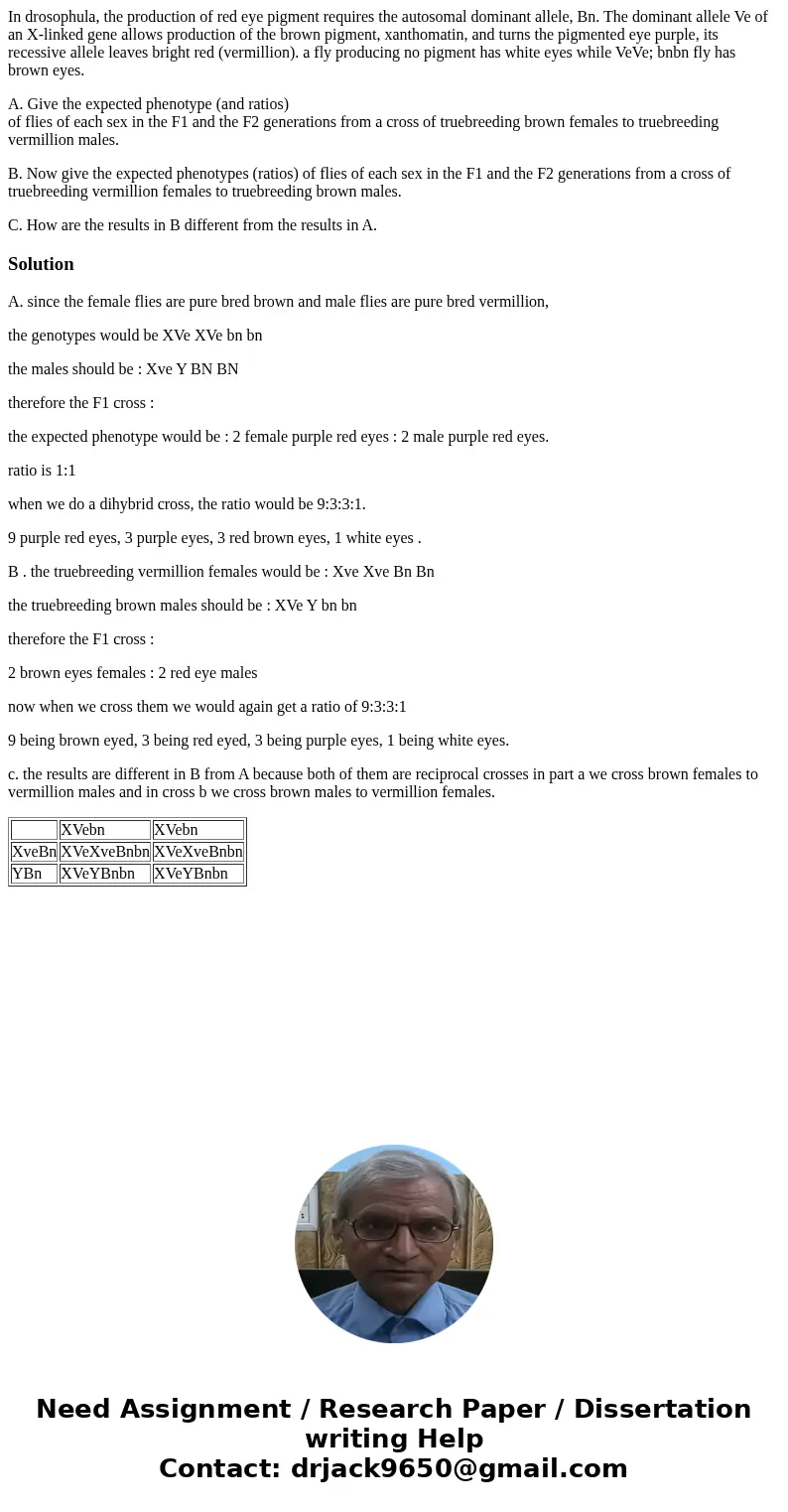In drosophula the production of red eye pigment requires the
In drosophula, the production of red eye pigment requires the autosomal dominant allele, Bn. The dominant allele Ve of an X-linked gene allows production of the brown pigment, xanthomatin, and turns the pigmented eye purple, its recessive allele leaves bright red (vermillion). a fly producing no pigment has white eyes while VeVe; bnbn fly has brown eyes.
A. Give the expected phenotype (and ratios)
of flies of each sex in the F1 and the F2 generations from a cross of truebreeding brown females to truebreeding vermillion males.
B. Now give the expected phenotypes (ratios) of flies of each sex in the F1 and the F2 generations from a cross of truebreeding vermillion females to truebreeding brown males.
C. How are the results in B different from the results in A.
Solution
A. since the female flies are pure bred brown and male flies are pure bred vermillion,
the genotypes would be XVe XVe bn bn
the males should be : Xve Y BN BN
therefore the F1 cross :
the expected phenotype would be : 2 female purple red eyes : 2 male purple red eyes.
ratio is 1:1
when we do a dihybrid cross, the ratio would be 9:3:3:1.
9 purple red eyes, 3 purple eyes, 3 red brown eyes, 1 white eyes .
B . the truebreeding vermillion females would be : Xve Xve Bn Bn
the truebreeding brown males should be : XVe Y bn bn
therefore the F1 cross :
2 brown eyes females : 2 red eye males
now when we cross them we would again get a ratio of 9:3:3:1
9 being brown eyed, 3 being red eyed, 3 being purple eyes, 1 being white eyes.
c. the results are different in B from A because both of them are reciprocal crosses in part a we cross brown females to vermillion males and in cross b we cross brown males to vermillion females.
| XVebn | XVebn | |
| XveBn | XVeXveBnbn | XVeXveBnbn |
| YBn | XVeYBnbn | XVeYBnbn |

 Homework Sourse
Homework Sourse